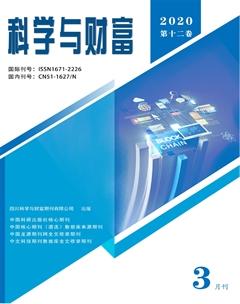浅析对奈达"功能对等论"的认识
祁田
摘 要:Nidas “functional equivalence” theory is the core of his translation theory system, which takes the readers reflection theory as the criterion of translation judgment, that is, the response of the target readers to the target text is equivalent to the response of the target readers to the original text. Functional equivalence theory has made great contribution to Chinese translation literature
關键词:Nida; functional equivalence theory; translation
Chapter one
The theory of functional equivalence was proposed by Eugene Nida, he is an American linguist, His major academic activities in his life revolved around the translation of the Bible. In the process of Bible translation, Nida develops a set of translation theories from the reality, and eventually becomes one of the classics of translation studies. The core concept of Nidas theory is “functional equivalence”. “Functional equivalence” means that translation does not require the rigid correspondence on the surface of the text, but achieves the equivalence between the two languages.
1.1 The basic principles of functional equivalence
In order to make the transformation between source language and target language have a standard and reduce the differences, Eugene A. Nida put forward the famous “dynamic equivalence” translation theory, namely “functional equivalence”, according to the essence of translation from the linguistic point of view. The equivalence in “dynamic equivalence” includes four aspects: Lexical equivalence; Syntactic equivalence; Textual equivalence; Stylistic equivalence. In these four aspects, Nida believes that “meaning is the most important, form is the second”.
1.2 Practical application of functional equivalence theory
Nidas theory of functional equivalence requires the functional equivalence of two languages. Therefore, the translator must treat the theory of "functional equivalence" objectively and apply the theory correctly.
1.2.1 Translation name
Ancient Chinese people have many specific names, such as“秦始皇”, under the guidance of functional equivalence theory, it should be translated into “the first emperor of Qin”. For example,“士大夫” translated into “scholar officials” Nida believes that “meaning is the most important, form is the second”. |“宰相”translated into “prime minister”.
1.3 Conclusion
According to Nidas “functional equivalence” theory, translators should understand
that translation is the transformation of one languages text into another languages text expression, requiring translators to reproduce the source language's information with the most appropriate natural equivalent from semantics to style.
Bibliography
[1] Nida, E.A. Towarda Science of Translating[M]. Leiden: E.J.Brill, 1964
[2] Nida, E. A. Language Culture and Translating.[M]. Press, 1993
[3] Nida, E. A. & Taber, Charles R. The Theory and Practice of Translating[M]. Shanghai Foreign Language Education Press, 1969.

